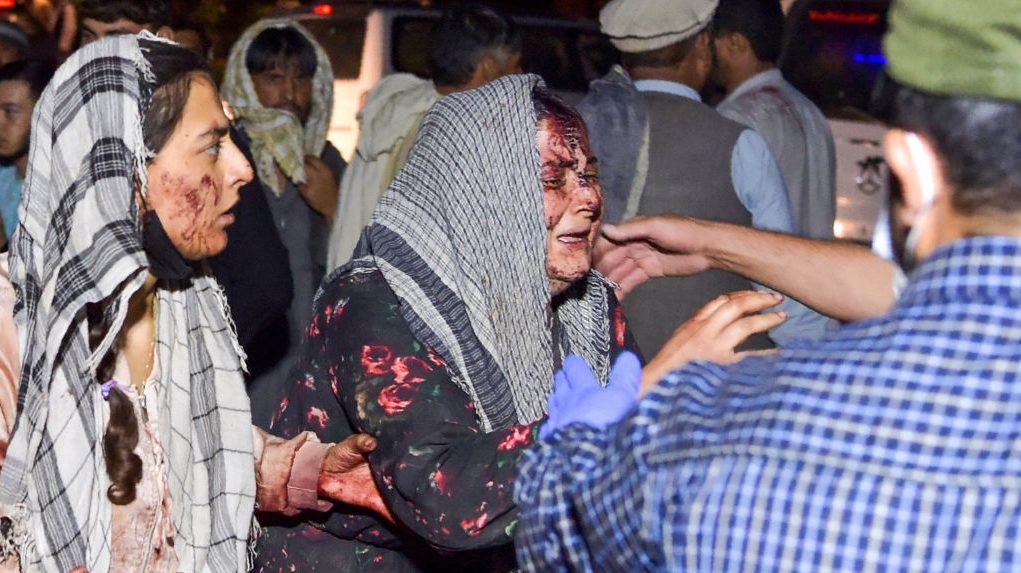Chaotic US Withdrawal, Taliban Control of Afghanistan May Give Rise to ISIS Branch
An Islamic State suicide bombing outside Kabul airport last week killed at least 92 people, including 13 US service members, as thousands of desperate Afghans were at the airport hoping to get on any evacuation flight out of the country in order to flee the Taliban.
The Islamic State in Khorasan Province issued a statement claiming responsibility for the suicide bombing attack, which reminded people of similar complex, vicious and cruel assaults during the reign of the original organization in Syria and Iraq.
Despite claims that the Islamic State, or ISIS, group was defeated in the area of the Levant, affiliated branches sprouted in Yemen, Sinai and North Africa, including the group’s regional chapter in Afghanistan called Islamic State-Khorasan or ISIS-K.
Khorasan is a historical name for the region, taking in parts of what is today Pakistan, Iran, Afghanistan and Central Asia.
The Islamic State organization declared a caliphate in Iraq and Syria in 2014, when its fighters rolled over Iraqi army forces. ISIS took advantage of the chaos in neighboring Syria, controlling large swaths of land in the war-torn country.
That year, fighters from the Pakistani Taliban led by Pakistani national Hafiz Saeed Khan split and joined fighters in Afghanistan to form an ISIS regional chapter, pledging allegiance to its leader Abu Bakr al-Baghdadi.
ISIS-K began operating in Afghanistan in 2015 when the top leadership of ISIS recognized the branch. It established roots in northeastern Afghanistan, particularly Kunar, Nangarhar and Nuristan provinces.
With the US-backed government out of power, the Taliban have now come face to face with ISIS-K.
According to a report by the Center for Strategic and International Studies (CSIS), ISIS-K’s founder died in a US airstrike in 2016.
The US has conducted several attacks against the group in the past, killing dozens of ISIS-K fighters in 2017, when US warplanes dropped the “mother of all bombs” – the biggest one in the US arsenal – on a cave the group was using as a hideout. That bombing killed 96 ISIS-K members.
Analysts estimate that the US military had killed 75% of ISIS-K fighters.
Despite the deadly attack, the United Nations estimates that ISIS-K still has between 500 and 2,000 fighters in Afghanistan’s Konar and Nangahar provinces. Smaller cells are scattered across the country.
But attacks like the ones last Thursday will be used to recruit new members for the group.
With the chaotic US withdrawal, and Taliban success in taking over control of most of Afghanistan, membership to Taliban and ISIS-K is likely to spike as the country becomes a fertile ground to attract new fighters for these groups.
The UN Security Council estimates as many as 10,000 foreign fighters from Central Asia, southern Russia, Pakistan and western China have rushed into Afghanistan in recent months.
And while a majority have joined the Taliban or al-Qaida, others joined ISIS-K.
The Islamic State’s Afghanistan-Pakistan regional chapter has been responsible for some of the most lethal attacks in recent years, its fighters charged with the most gruesome assaults on civilians in both countries, at mosques, shrines, public squares and even hospitals.
The group has especially targeted Muslims from sects it considers heretical, including Shiites.
ISIS-K conducted at least 77 attacks in Afghanistan during the first four months of 2021, according to a UNSC report in June, a huge increase from the 21 attacks during the same period in 2020.
Taliban’s ideology centers around enforcing its version of sharia law in Afghanistan, while ISIS-K has its eyes on a bigger prize and that is to establish an Islamic caliphate across the Middle East and Asia.
It’s no secret that the two groups are rivals, and last Thursday’s deadly bombing with the many fatalities and chaos that ensued as a result, had another goal in ISIS-K’s mind, and that is to undermine the Taliban.
A new leader was appointed to head the group late last year, Shahab al-Muhajir, an Arab from the Middle East, believed to be Iraqi, who previously served with al-Qaida in the Afghanistan-Pakistan region.
A UN report in July described al-Muhajir as “ambitious,” and called operations under his leadership “active and dangerous.”
Following last Thursday’s deadly suicide bombing at Kabul airport, the US military said Friday it had carried out a drone strike against a “planner” of the Islamic State-Khorasan.
“The unmanned airstrike occurred in the Nangarhar Province of Afghanistan. Initial indications are that we killed the target,” said Captain Bill Urban of the US Central Command.
A Sunday explosion in the Afghan capital, Kabul, reportedly was an American retaliatory drone strike on a vehicle carrying multiple Islamic State suicide bombers on the way to the Kabul airport.


